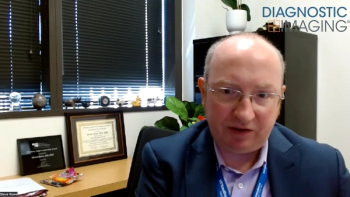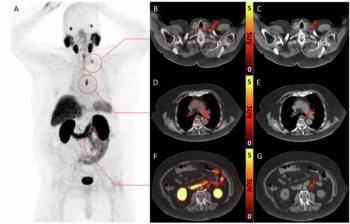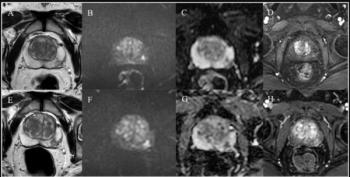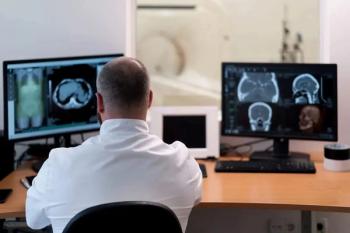
Are We Prepared for a Looming Radiologist Shortage?
While current projections suggest a shortage of radiologists in the future, promising developments with radiology residency positions, medical student awareness of the field and AI-aided efficiencies could be game changers.
The prompt and accurate results of an imaging study can be the difference between life and death. Yet the number of practicing radiologists in the United States is likely insufficient to meet the growing demand. This shortage is also projected to worsen, and according to the Association of American Medical Colleges (AAMC), the U.S. is projected to have a shortage of 17,000 to 42,000 radiologists, pathologists, and psychiatrists by 2033.1 On average, the number of imaging studies increases by a rate of up to five percent per year, but the number of radiology residency positions only increases by two percent.2
This shortage has a dramatic impact on patient care. A shortage of radiologists leads to increased turnaround times for study results to be generated, which can negatively impact patient outcomes. One recent study found that radiology imaging delays are an independent predictor of length of hospital stay.3 Another recent study found it took more than three hours to generate a report from an average CT study with the radiologist being the bottleneck 42 percent of the time.4 This delay in clinically pertinent information can have a significant impact on patients. These delays needlessly burden health systems, patients, and insurers, and could be resolved by improved imaging coverage. Although the situation might appear dire, there are many potential solutions.
The first and most immediate solution would be an increase in the number of radiology residency positions. The number of positions is largely determined by Medicare, and there have only been marginal increases over the years in radiology. In 2006, there were 1,011 radiology residency positions. In 2020, there were 1,113 radiology residency positions. However, this slow increase has begun to change as Congress passed a graduate medical education (GME) expansion in 2020, which added 1,000 new residency spots, many of which are likely to be radiology positions.
Increasing medical student awareness of the specialty is another promising way to combat the shortage. Medical students often have little exposure to the radiology specialty, and a recent study found that only 35 percent had completed a radiology rotation by graduation.5 This could be remedied by promoting radiology as a core rotation in medical school as well as increasing the amount of radiology material that is covered during the preclinical curriculum. One study found that adding just 2.5 hours of radiology lectures to the first year of medical school significantly increased student interest in radiology, and increased the likelihood of students completing a radiology rotation later in the curriculum.6 This is a promising solution since more medical students interested in and matching into radiology could potentially reduce the impact of the radiologist shortage.
Another solution to this workforce challenge is achieving improvements in radiologist efficiency. Many studies have investigated potential methods by which radiologists can increase efficiency. Promising solutions include decreasing distraction and integrating the utilization of artificial intelligence (AI) in practice.7,8 Interruptions due to phone calls, emails, and consent forms can hinder a radiologist’s workflow, potentially leading to decreased performance and less informed consultations.8
Reductions of these distractions through the use of reading room coordinators and enhanced communication workflows are often pursued as solutions for improving efficiency. Additionally, AI enables radiologists to perform their roles with greater efficiency. Although unlikely to replace the role of the radiologist, AI can be used to help with measuring lesions, comparing studies, and triaging scans that are at an increased risk of being urgent. One study found that AI could be used to select which chest X-rays were more likely to be abnormal, and then prioritized those for interpretation by radiologists.7 This method was able to decrease the average delay in interpretation of abnormal scans from 11.2 days to 2.7 days.
In Conclusion
Although current trends in the number of practicing radiologists may seem concerning, the future is bright. There are many effective solutions to this problem, all of which are simultaneously being pursued. Many medical schools are integrating more radiology material into the curriculum, radiology residency positions are being expanded, and radiologists are becoming more efficient each year. These trends are promising for the future of the field and with sufficient action, the shortage can be addressed and possibly reversed.
References
1. Dall T, Reynolds D, Chakabarti R, et al. The complexities of physician supply and demand: projections from 2018 to 2033. Washington, D.C. Associaion of American Medical Colleges. Available at:
2. Smith-Bindman R, Kwan ML, Marlow EC, et al. Trends in use of medical imaging in US healthcare systems and in Ontario, Canada, 2000-2016. JAMA. 2019;322(9):843-856.
3. Courane S, Conway R, Creagh D, et al. Radiology imaging delays as independent predictors of length of hospital stays for emergency medical admissions. Clin Radiol. 2016;71(9):912-8.
4. Perotte R, Lewin G, Tambe U, et al. Improving emergency department flow: reducing turnaround time for emergent CT scans. AMIA Annu Symp Proc. 2018 Dec 5;2018:897-906. eCollection 2018.
5. Prezzia C, Vorona G, Greenspan R, et al. Fourth-year medical student opinions and basic knowledge regarding the field of radiology. Acad Radiol. 2013;20(3):272-83.
6. Branstetter B, Humphrey A, Schumann J. The long-term impact of preclinical education on medical students’ opinions about radiology. Acad Radiol. 2008;15(10):1331-9.
7. Dargan R. Artificial intelligence boost efficiency and quality in radiology practice. Radiological Society of North America (RSNA). Available at:
8. Lee MH, Schemmel AJ, Pooler BD. Radiology workflow dynamics: how workflow patterns impact radiologist perceptions of workplace satisfaction. Acad Radiol. 2017;24(4):483-487.
Newsletter
Stay at the forefront of radiology with the Diagnostic Imaging newsletter, delivering the latest news, clinical insights, and imaging advancements for today’s radiologists.






























